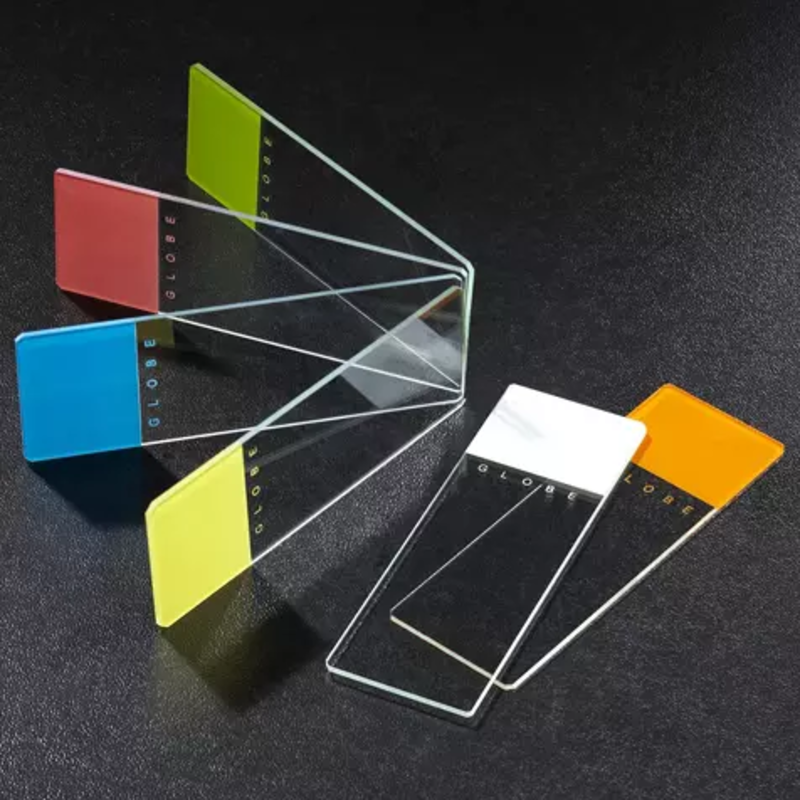Choosing Digital Microscope Cameras And Microscope Bulbs
June 09 2017 /
Before we discuss digital microscope cameras, let’s briefly review what distinguishes digital microscopes from other types of microscopes. A digital microscope is a variation of a traditional optical microscope that uses optics and a digital camera to output an image to a monitor via computer software. They usually have their own built-in LED light source, and since the image is focused on the digital circuit, the entire system is designed for the monitor image. There is no provision to observe the sample directly through an eyepiece, as you would find on an optical microscope, and therefore the optics for the human eye are omitted. Digital microscopes are commonly low priced commercial microscopes designed to be used with a computer.
These microscopes have a significant advantage over other microscopes, namely, their magnification. Since digital microscopes do not have an eyepiece, the magnification is determined by how many times larger the sample is reproduced on the monitor. This means that the size of your monitor is crucial. And, since the digital microscope has the image projected directly onto the CCD (charge coupled device) camera, it is possible to have higher quality recorded images.
DIGITAL MICROSCOPE CAMERAS
Now let’s get into digital microscope cameras. The Moticam series are digital microscopy cameras that have the ability to connect the camera to your TV monitor, computer or projector. They can also capture the perfect image, and allow you to take measurements, make annotations, create reports, make comparisons and much more. They include an “all-in-one-box” which includes the camera, accessories and Motic Image Plus 2.0. This program allows immediate access to examine the full functionality of the imaging camera to view specimens, capture and share images. Specifically, the Moticam 580 digital microscope camera transforms your microscope into a digital documentation station. It offers richer color definition, better signal integrity, greater bandwidth, and HD videos. The live image may be streamed through the provided HDMI cable to a high-resolution monitor. The image will be of higher quality with these microscope cameras.
MICROSCOPE BULBS
When you purchase your microscope, be sure to find out what kinds of bulbs are needed for your microscope. The more common the bulb is the better off you will be in the long run. There are four kinds of microscope bulbs: Tungsten, Fluorescent, LED and Halogen.
Tungsten is the least expensive microscope bulb around today. This bulb provides a steady source of light, but can get very hot, and that heat can possibly dry out specimens. Microscopes with tungsten lights usually have an on/off switch and no dimmer.
Fluorescent bulbs consist of a gas filled tube that is more expensive. It appears to us as a whiter light where objects look more accurate. These lights give off very little heat, which is important when observing specimens
An LED (Light Emitting Diode) consume very little power and is long-lasting. Technology advances have made these bulbs brighter, much more reliable, and fully dimmable. As a consequence, their use in microscopes has gained popularity.
Halogen is seen primarily in medical and research microscopes because it provides a very white, bright, concentrated light. This type of light is preferred in medical and lab instruments. Microscopes with halogen lights are usually fitted with a dimmer, which reduces the heat produced.
CHANGING A MICROSCOPE BULB
In order to keep a microscope working properly, the light source needs to be at top performance levels. Replacing the bulbs and arrays will meet those performance levels.
Before starting, allow the bulb you are replacing to cool, and take a few minutes to consult the user’s manual to identify the type and size of light source (light bulb or LED array) that will be needed, as well as guidance on how to change the light source.
Next, loosen the set screw enough to allow the light source cover to lift free of the base, being careful not to lose the screw. Set the cover aside, making sure not to get fingerprints, dust, dirt, sand or other debris on the inside glass lens. Remove the bulb or array and place it somewhere it will not be broken.
Using a soft cloth, handkerchief, or wearing a cotton glove, remove the bulb or array from its packaging and install it. Avoid touching the glass of the bulb with your bare hands, as fingerprints, natural oils in the skin, and particles of dust can be transferred to the bulb or array. When the bulb gets hot it will heat the oils, which can cause the bulb or array to blow, or the oils can burn and discolor the bulb or array, affecting the image quality. Or, the dust particles can burn into the bulb, reducing the life of the bulb and, again, affecting the quality of the light produced by the bulb. Any of these will result in the necessity of replacing the bulb or array prematurely.
Replace the cover as dictated by its design and tighten down the set screw. After the replacement is complete, wrap the old bulb in paper towels or old newspaper and tape it closed to protect the hands of anyone who handles the trash bag.
